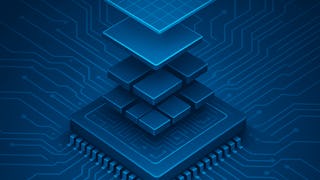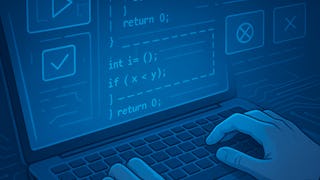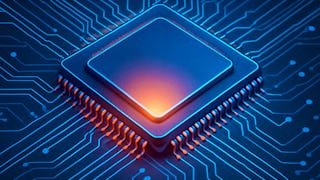The final course covers more advanced and optional features that might be configured in a Cortex-M system. These features could help with particular project requirements such as security and performance. Not all of these topics might be relevant for any given Cortex-M project, so feel free to pick and choose which topics, if any, apply to you.

Enjoy unlimited growth with a year of Coursera Plus for $199 (regularly $399). Save now.

Advanced Armv8-M Features
This course is part of Arm Cortex-M Architecture and Software Development Specialization



Instructors: Solomon Tucker
3,007 already enrolled
Included with
(23 reviews)
Recommended experience
Skills you'll gain
Details to know

Add to your LinkedIn profile
8 assignments
See how employees at top companies are mastering in-demand skills

Build your subject-matter expertise
- Learn new concepts from industry experts
- Gain a foundational understanding of a subject or tool
- Develop job-relevant skills with hands-on projects
- Earn a shareable career certificate

There are 9 modules in this course
The final course covers more advanced and optional features that might be configured in a Cortex-M system. These features could help with particular project requirements such as security and performance. Not all of these topics might be relevant for any given Cortex-M project, so feel free to pick and choose which topics, if any, apply to you.
What's included
1 video
This module describes the mechanism in the Armv8-M architecture to to share resources like peripherals between different threads and processors in an M-profile system.
What's included
7 videos1 reading1 assignment
This module is aimed to be a top-level module on caches for M-profile systems that covers fundamental cache terminology all the way through to configuring and utilising the cache for improved performance in M-profile systems involving more complex implementations like Cortex-M7 and Cortex-M55.
What's included
19 videos1 reading1 assignment
The DSP Extension is an optional feature for Armv8-M Mainline implementations that allows allows DSP operations to be executed by a dedicated instructions.
What's included
5 videos1 reading1 assignment
The Floating-point Extension is an optional feature for Armv8-M Mainline implementations that allows allows floating-point operations to be executed by a dedicated floating-point unit (FPU) hardware.
What's included
10 videos2 readings1 assignment
This module is about the SysTick Timer, which is mandatory in Armv7-M and Armv8-M Mainline implementations, and optional in Armv6-M and Armv8-M Baseline implementations.
What's included
3 videos1 reading1 assignment
This module is about the optional Security Extension in Armv8-M Mainline implementations. The Security Extension is also an option for Armv8-M Baseline implementations.
What's included
10 videos1 reading1 assignment
This module describes the Pointer Authentication Code (PAC) and Branch Target Identification (BTI) Extension introduced as a part of Armv8.1-M architecture.
What's included
10 videos1 reading1 assignment
This module is an essential foundation module for MVE training course. It introduces the story, architecture features, software and tools support for MVE.
What's included
16 videos3 readings1 assignment
Earn a career certificate
Add this credential to your LinkedIn profile, resume, or CV. Share it on social media and in your performance review.
Instructors



Offered by
Explore more from Software Development
 Status: Free Trial
Status: Free Trial Status: Free Trial
Status: Free Trial Status: Free Trial
Status: Free Trial Status: Free Trial
Status: Free Trial
Why people choose Coursera for their career





Open new doors with Coursera Plus
Unlimited access to 10,000+ world-class courses, hands-on projects, and job-ready certificate programs - all included in your subscription
Advance your career with an online degree
Earn a degree from world-class universities - 100% online
Join over 3,400 global companies that choose Coursera for Business
Upskill your employees to excel in the digital economy
Frequently asked questions
To access the course materials, assignments and to earn a Certificate, you will need to purchase the Certificate experience when you enroll in a course. You can try a Free Trial instead, or apply for Financial Aid. The course may offer 'Full Course, No Certificate' instead. This option lets you see all course materials, submit required assessments, and get a final grade. This also means that you will not be able to purchase a Certificate experience.
When you enroll in the course, you get access to all of the courses in the Specialization, and you earn a certificate when you complete the work. Your electronic Certificate will be added to your Accomplishments page - from there, you can print your Certificate or add it to your LinkedIn profile.
Yes. In select learning programs, you can apply for financial aid or a scholarship if you can’t afford the enrollment fee. If fin aid or scholarship is available for your learning program selection, you’ll find a link to apply on the description page.
More questions
Financial aid available,






